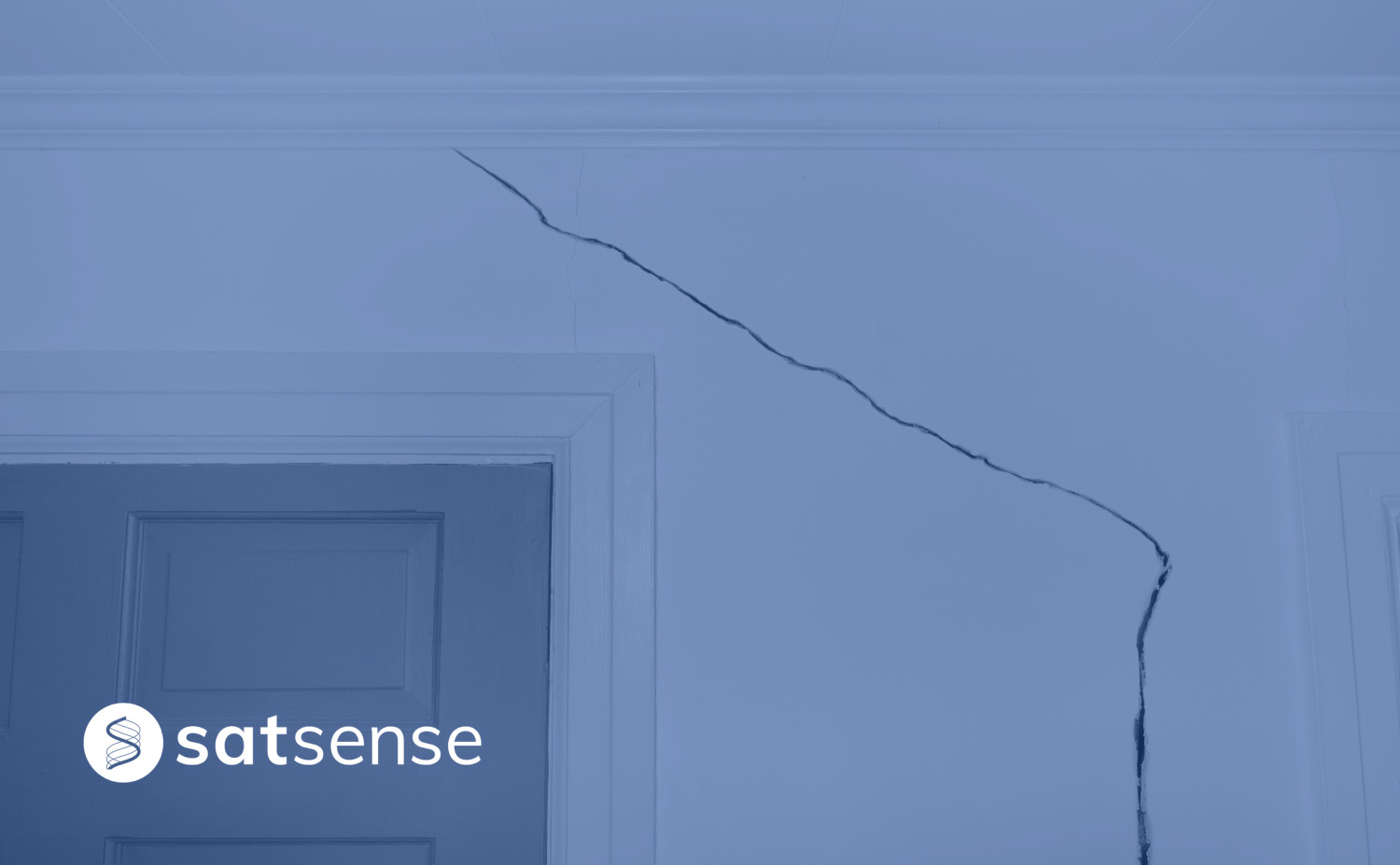A member of the SatSense team was chatting to a neighbour one morning this week, and the neighbour mentioned his ongoing subsidence issues following the warm dry summer of 2018.
“Funny you should mention that…”
Having previously looked at the area around his own property and hence his neighbour’s house on our data portal, our man on the inside knew there were likely to be issues. His neighbour’s house showed signs of more movement than any other house within a few hundred metres and had often wondered what the effects were.

Satellite data showing >30mm movement at the house with subsidence issues, in less than a 3-month period
Insurance claim for subsidence
It turns out that the house owner and his insurers are mid-dispute over an insurance claim, with a significant amount of money at stake. Some of the cracking is shown in the images below.
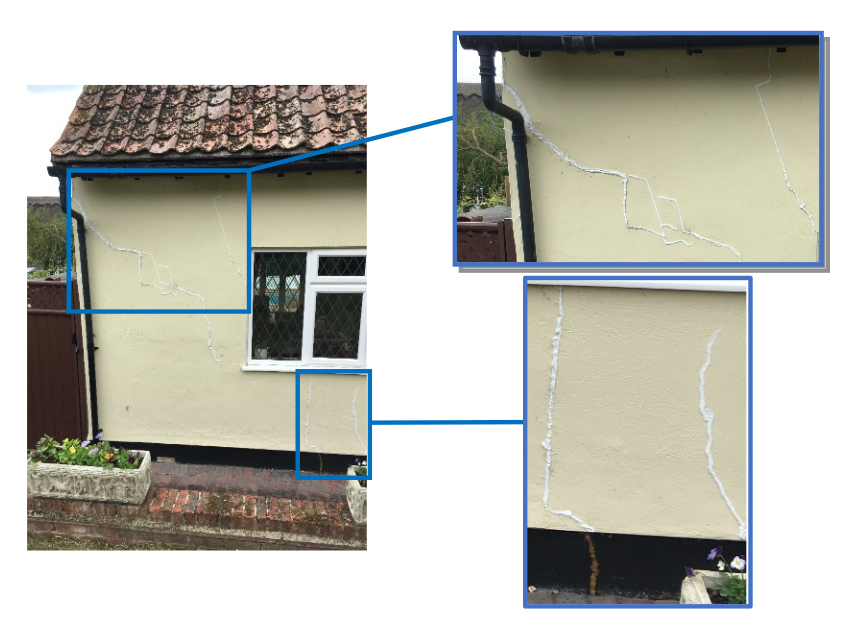 Cracks to one of the outside walls of the property in question
Cracks to one of the outside walls of the property in question Given that the movement is represented as red dots on the data portal, i.e. ground moving away from the satellite while the satellite is on its ‘Descending’ trajectory relative to the earth (and while the satellite is on its descending trajectory it is facing towards the west) the movement is either down, or west, or both.
Upon examining the ‘Ascending’ data in the data portal (shown below) the house is represented by blue dots, meaning the ground is moving towards the satellite as it ascends (which is looking towards the east) - hence the ground is moving up, or to the west, or both.
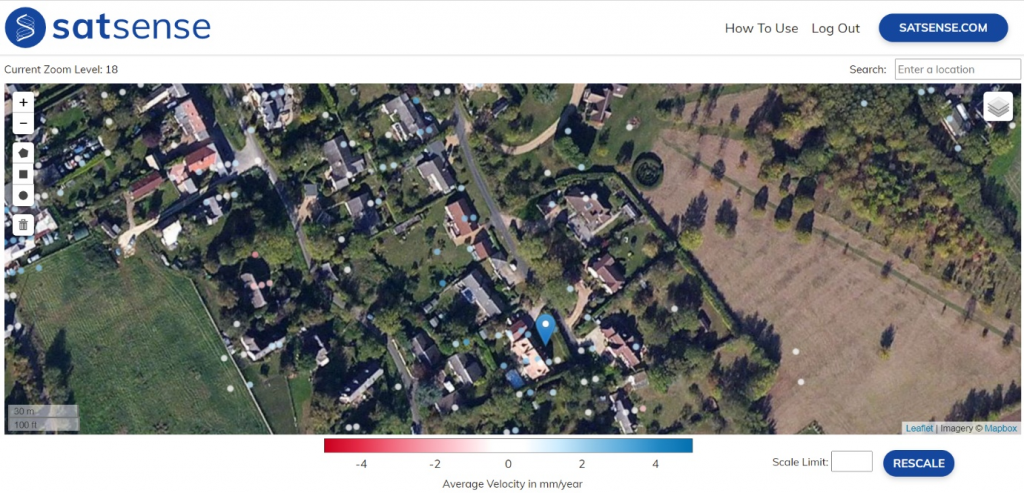 Ascending satellite track showing slight ground movement towards the (east-facing) satellite, on or close to the house with subsidence issues
Ascending satellite track showing slight ground movement towards the (east-facing) satellite, on or close to the house with subsidence issues The difference in magnitude between the Ascending and Descending data indicates that the movement is likely both westward and downward. For Ascending, down and west cancel each other out (one is away from the satellite, the other towards). For Descending, they add (both are away from the satellite). Westwards and downwards in this case makes sense, as the house is on a slight hill, with west being further downhill – but this can be verified as below.
Combining data from two satellite trajectories to calculate east or west movement
Interestingly, one of our products, which combines the readings of two satellites and uses the look-angles to calculate East-West movement (shown below) separately to up-down movement also picks this out as an area of concern.
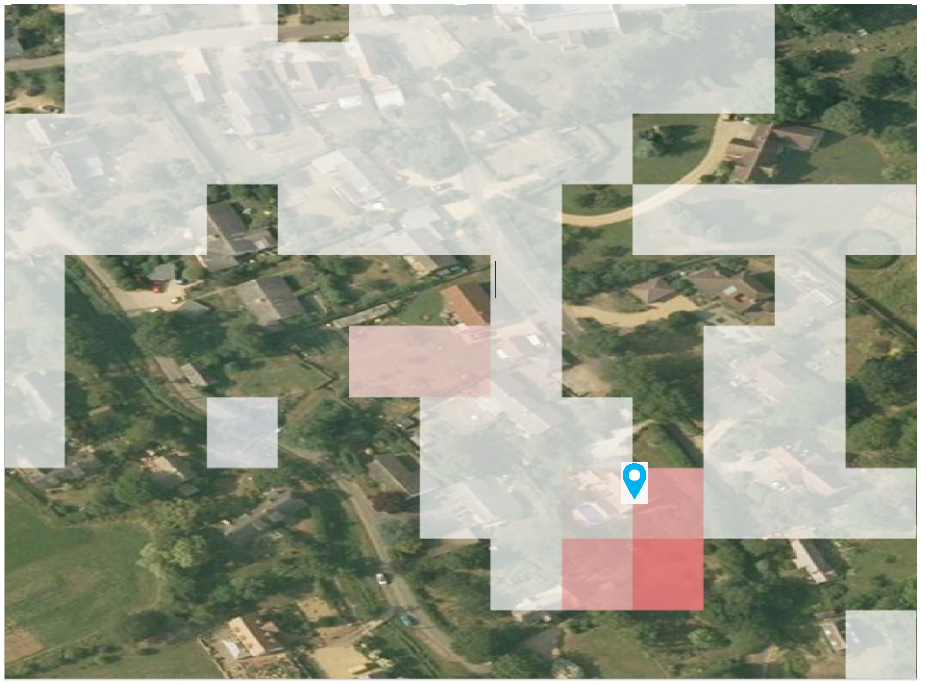 One of SatSense’s data products showing East / West ground movement, in this case the house is at a juncture of stationary and west-moving ground
One of SatSense’s data products showing East / West ground movement, in this case the house is at a juncture of stationary and west-moving ground The house is between ground that is moving and ground that is stationary - the area that is most prone to bending, and thus building damage.
Widespread subsidence coverage
Looking on a larger scale across the village (shown below) while it’s clear that not many properties display such clear signs of movement, there are at least three more which do show clear signs of movement following the warm dry summer of 2018.
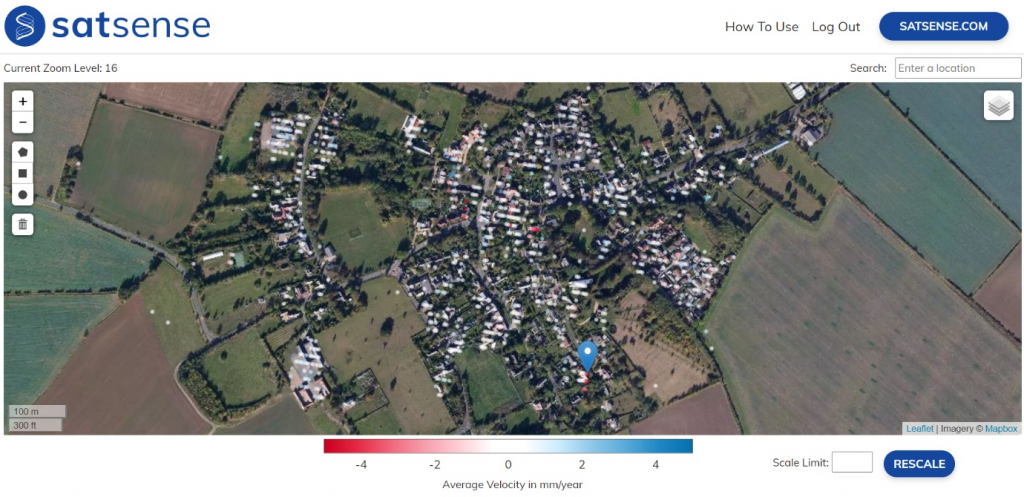 Basic subsidence / heave point coverage of a ~1km2 village, Descending data only shown
Basic subsidence / heave point coverage of a ~1km2 village, Descending data only shown There are however two things to note; firstly that a seemingly clear subsidence or heave signal does not definitely mean subsidence issues. And secondly, that if there is no clear signal in the data as presented below, that does not necessarily mean there won’t be subsidence-related issues.
Another means of detecting potential subsidence
To detect subsidence and heave using InSAR data, it may be necessary to look at the data in more detail. For this reason, we have developed a series of
property subsidence risk indices which consider factors such as bending, range of movement and acceleration which are difficult / impossible to pick up from the data as presented above.
Maybe if buyers, and just as importantly insurers were better informed of these sorts of risk, the sort of stressful dispute being experienced in the example above could be avoided. If you think SatSense’s data and analysis could be of use to you please get in
contact@satsense.com.
